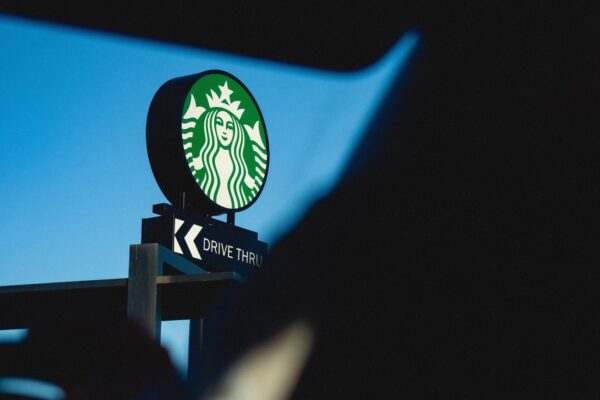How Trademarking Your Tech Ideas Can Yield Great ROI
In this article, we’ll explain how trademarking your tech idea can yield great return on investment…
In 2020, around 20,000 new tech companies, or startups, were launched. That’s around one new business every half hour. As we rely more and more heavily on tech such as mobile phone apps, it seems that the opportunities for tech entrepreneurs are endless, not to mention lucrative.
While having a great idea is a good start, it’s also important to protect that idea to guard against trademark infringement as you build your business. Keep reading and we’ll explain how trademarking your tech idea can yield great return on investment…
What is Trademarking?
A trademark is, essentially, a badge which shows that you are the owner of a specific set of goods or services and is designed to ensure that another person or company cannot ‘steal’ your name, logo, slogan and more.
For example, in 2020, drinks manufacturer, Red Bull, won a court case against Big Horn after the latter began using a logo for its drinks which was extremely similar to that of Red Bull’s logo.
When your property and intellectual property is protected by trademark, this not only helps to prevent theft of your idea but, also, makes it much easier to fight your case in the event of an infringement and to, therefore, protect what’s yours.
Why Should You Trademark an Idea?
There are a few ways in which you can protect your idea. This is particularly important during the time before you launch your product or idea. Why?
You will perhaps remember that, back in 2011, entrepreneur Mark Zuckerberg and his social media platform, Facebook, were forced to pay a $65 million settlement to his fellow students, Tyler Winklevoss, Cameron Winklevoss and Divya Narendra. The settlement was the result of a lawsuit brought by the Winklevoss twins and Narendra over who came up with the original idea for Facebook.
While it was Zuckerberg who created and then went on to run Facebook, his three adversaries insisted that the actual idea for the platform was theirs. Cases like this show just how important it is to protect a business or product idea or concept right from the word go. One of the most effective ways of doing this is through trademarking. According to Luke Lee, the CEO of Palaleather, if you’re a tech entrepreneur, then you know that ideas are everything. And if you have a great idea for a new app or piece of software, you want to protect it. That’s where trademarking comes in. Trademarking your tech ideas can yield great ROI, by ensuring that others can’t copy or steal your ideas.
How do You Trademark Something?
If you wish to trademark your property in the UK, your first step is to check that somebody else has not already done so. You can do this by running a search on the Business & IP Centre.
Next, you need to decide which territories you wish to trademark in, for example, worldwide, Europe or just the UK. A trademark will usually run for 10 years, after which it will need to be renewed. Trademarking your idea will cost between £170 and £200.
When trademarking your property, there are 45 different categories to choose from and, it’s important that you make sure you pick the right one as, not doing so may invalidate your claim.
What is the Difference Between Trademark and Copyright?
There’s often a little confusion as to the difference between trademarking and copyrighting. To put this simply, trademarking protects the particular identification of a product or business (for example, a logo), whereas copyright prevents copying or reproduction of work such as written work or filmed performances.
In some instances, a brand may take advantage of both trademarking and copyrighting. For example, if the brand uses a logo and slogan and, also, publishes content such as blogs or ebooks.
If your business idea involves a physical product, such as a gadget or app, it’s important to also protect a prototype of the product as quickly as possible, you can do this by applying for a patent if applicable and, this will cost you between £60 and £130.
While trademarking is usually used to protect business assets and ideas, this is not exclusively the case and, there have been instances where people have used trademarking for somewhat more unusual reasons.
In 2019, popular singer, Taylor Swift, filed to register trademarks for the names of her three cats – Meredith, Olivia and Benjamin Swift as she wished to use her pets names on her merchandise. The singer also attempted to trademark specific lines and phrases from her some of her hit songs.
What are the Benefits of Trademarking Your Technology?
Recognition
Trademarking aspects of your business, for example a logo, allows you to create branding which will be instantly recognisable to customers. A good example of this would be an international brand such as McDonalds and Starbucks, both of which have distinctive colours and logos which customers can spot even from a distance.
Trademarking helps to make sure that another company who may be competing with your business is not able to mimic your branding in a bid to steal your hard won customers. This form of identity theft is extremely harmful as it not only results in lost customers but, also, if the quality of the offender’s product is low, can result in a loss of consumer trust.
An example of this occurred in the UK when leading high street brand, Marks & Spencer, sued budget supermarket chain, Aldi. The case began when Marks & Spencer, whose Colin The Caterpillar cake is extremely popular, sued Aldi over its Cuthbert The Caterpillar cake.
The case was ultimately settled out of court and both cakes remained on shelves as it turned out that Marks & Spencer had not, in fact, trademarked their cake.
Return on Investment
This much used phrase refers to the ratio between net income and investment, i.e. the costs versus the profits. Return on investment (ROI), is a measurement of a company or product’s success. For example, a high ROI is favourable as it means that the company has made more money than it has spent.
Crunching the numbers is a major part of any business. In larger companies, it’s not uncommon for finance departments to regularly calculate the ROI of several individual parts of the business, including departments and specific products.
So, how can trademarking improve ROI? There are a couple of ways in which trademarking your idea can improve your profits and return on investment and, these are:
Branding
Trademarking your property and intellectual property helps you to create a recognisable brand which customers enjoy and feel comfortable with worldwide.
For example, whether you’re in Bognor or Bangladesh, if you fancy fried chicken for lunch, you might immediately look out for the distinctive red and white Colonel Sanders logo as you know the brand and you know that you enjoy the food.
Creating a distinctive brand is an integral part of any successful business and involves tangible factors such as visual aspects as well as ideas. For example, statements on how the brand differs from other, similar ones which may be in existence and, which may be in direct competition with yours.
Exclusivity
Trademarking is all about protection for your business, products and your ideas. Let’s revisit the example of KFC. If the brand did not have trademark protection for its logo, colours and slogan, then there would be very little to stop a rival friend chicken company, from setting up shop next door using a logo which is similar or identical to that of KFC.
This would mean that there is a danger of KFC’s loyal customers mistaking the interloper for KFC and shopping there instead. This has the potential to result in lost custom for KFC and, also, a loss of reputation, particularly in the age of social media when users can share information about a brand at the click of a button..
When you trademark your property, you protect against this kind of copying infringement not just for now but, also, for the future. As long as your trademark is in place, your property is protected.
You can also use trademarking to ensure that your idea is protected not just in your home country but, if you so choose, all across the world. All of this means that nobody, in any country or at any time, can steal your business idea. Therefore, your return on investment from the small cost of trademarking is significantly high.
This can be particularly important if your idea is one which will become an everyday item or service which might reasonably generate a significant amount of income for years to come.
Remember to Trademark Your Original Ideas…
Launching a new product or business involves a number of factors and a number of costs and, while you may be looking at way of cutting some costs, trademarking should not be one of them.
When creating a brand, most business owners are looking toward longevity and need to know that their logo, slogan and even colour scheme is protected against theft.
Trademarking not only protects against the possibility of lengthy and costly legal action (we’re looking at you, Marks & Spencer) but, more importantly, protects your ROI and profits both now and in the future.



















